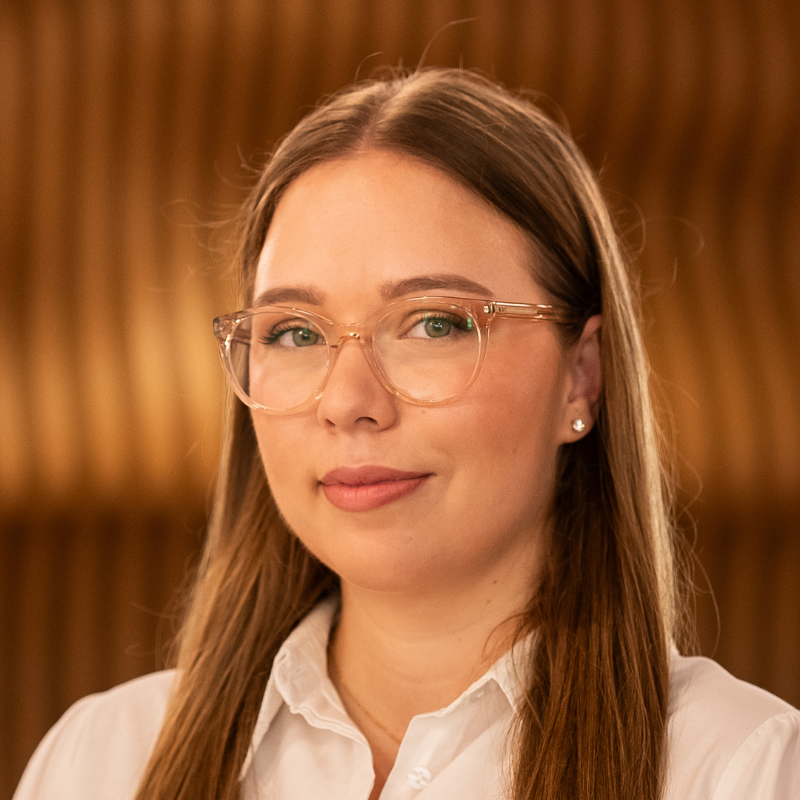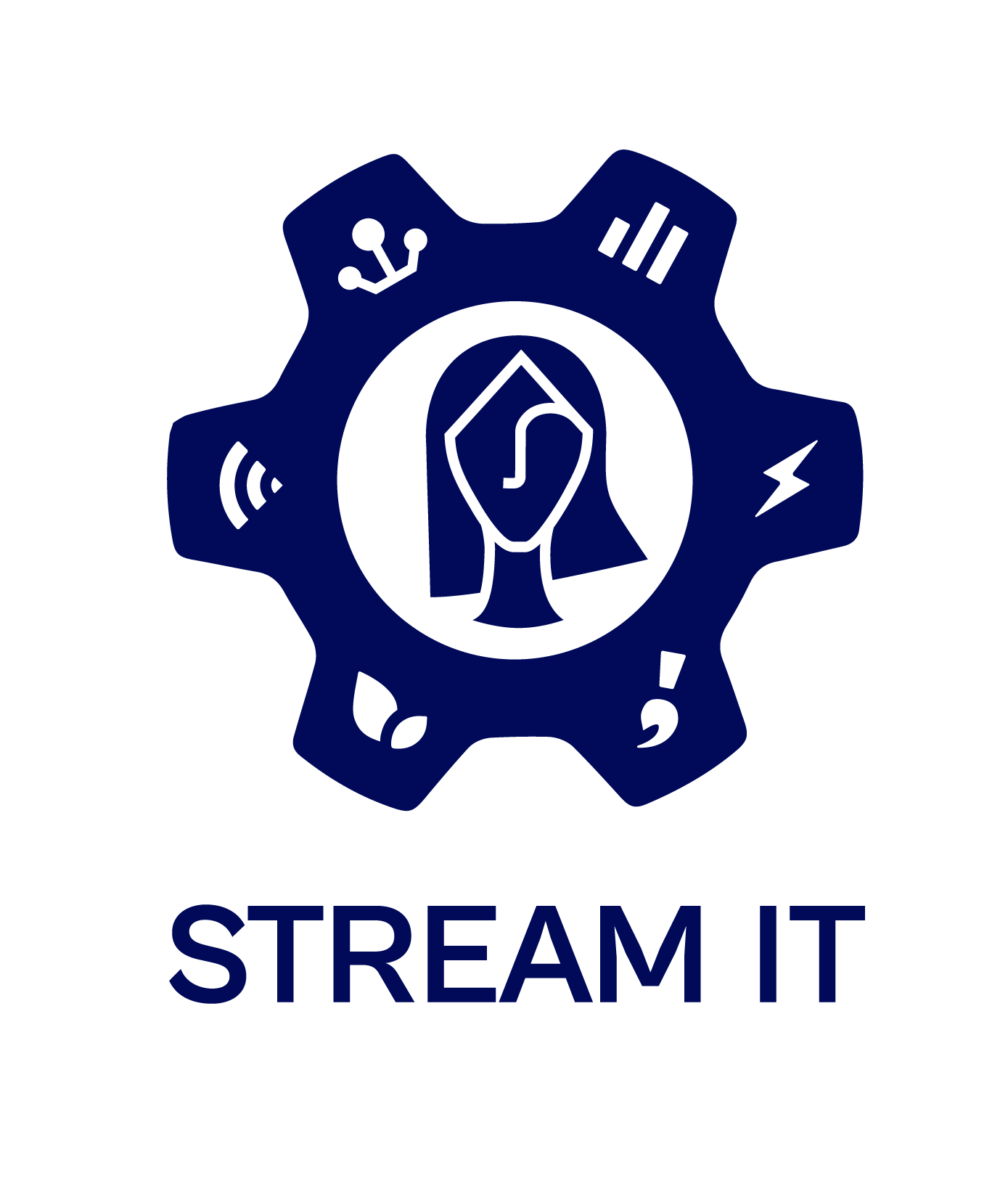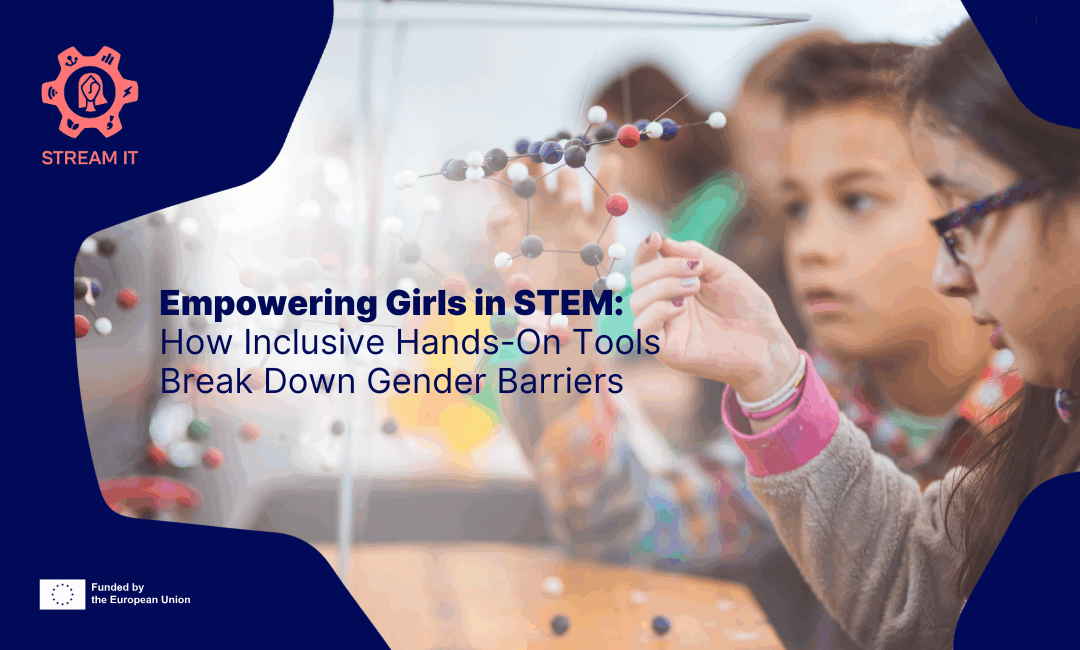In classrooms and labs across Europe, talent knows no gender – yet girls and young women remain vastly underrepresented in STEM fields. Despite making up over half the population, women account for only about one in three STEM graduates and a mere one in five ICT specialists in the EU[1]. This gap isn’t due to a lack of ability or interest; it’s the result of persistent obstacles that discourage girls from pursuing science, technology, engineering, and math. Understanding these barriers is the first step toward removing them. A recent Stream IT research report aimed to identify the challenges that girls and young women face in STEM education – and the findings are informing real solutions.
The Obstacles Holding Girls Back
Even today, many girls interested in science or coding find the odds stacked against them long before they enter a lab or tech company. Cultural stereotyping remains a powerful force, with deep-rooted beliefs about what is “masculine” or “feminine” shaping who is seen as a natural fit for STEM[2]. From a young age, girls absorb messages that physics or computer science is “for boys,” making them feel like outsiders in these fields. This sense of being the Other often continues in school, where isolation in male-dominated classrooms can leave girls feeling alone or unwelcome. Many experience a lack of supportive relationships and mentorship – few role models to look up to, and fewer people encouraging their ambitions. Some encounter subtle (or not-so-subtle) discrimination and bias, from teachers who underestimate their abilities to peers who question their presence. Later, as they plan their futures, balancing work and family expectations becomes another hurdle: there’s a widespread notion that a demanding STEM career might be incompatible with raising a family, pressuring young women to make unfair choices.
These challenges do not exist in isolation – they reinforce each other, creating a chilly environment that can chip away at confidence and drive. As the STREAM IT research report (D2.3) highlighted, traditional cultural norms that tie technical skills to masculinity, coupled with a lack of a supportive environment and the difficulty of reconciling STEM careers with family roles, are among the most significant barriers holding young women back[2]. Yet, every one of these obstacles has a flip side: an opportunity to intervene and change the narrative. That’s exactly where our Work Package 3: Developing Gender and Diversity Inclusive Tools for Hands-On Activities comes in – translating research insights into concrete actions that empower girls in STEM.
Workshops: Sparking Interest and Shattering Stereotypes
One key initiative of WP3 is a series of hands-on workshops designed to support girls (especially ages 14-18) as they explore and orient toward STEM fields. These workshops are all about breaking stereotypes and building confidence. Imagine a space where girls can tinker with robotics, code a simple app, or experiment with chemistry in a fun, creative way – and do so surrounded by peers and supportive educators. By providing an early positive STEM experience, the workshop series chips away at cultural preconceptions that science and tech are “not for girls.” Instead, girls get to see firsthand that they belong in STEM. Many workshops feature female scientists, engineers, or university students as facilitators or guest speakers, offering real role models who make STEM careers feel tangible and attainable. This kind of supportive, all-girl learning environment serves as a counterweight to the isolation some might feel in their regular classrooms. In a judgment-free zone where trial-and-error is encouraged, participants can ask questions, make mistakes, and get excited about STEM without fear of fitting some geeky stereotype. The goal is to light a spark – to let each girl discover that STEM is about curiosity and creativity, not about who you are or what gender you happen to be. With every robot built or code debugged, the old biases begin to crumble, replaced by confidence and a sense of “I can do this!”
Hands-On Learning: Science Centres as Inclusive Spaces
WP3 also taps into the magic of science centres, museums, and other unexpected places as venues for learning. These hands-on activity sessions turn STEM into a lived, interactive experience – one that’s welcoming to everyone. Science centres are essentially playgrounds of discovery, and by holding special STEM events for girls, the project creates an environment where they won’t feel like the odd ones out. Picture a group of girls guiding a robot through a maze at a tech exhibit, or collaborating to solve a puzzle at a math station – they’re not just absorbing scientific concepts, they’re seeing teamwork and diversity in action. Such experiences directly address the challenge of isolation in male-dominated settings. When girls come together in an inclusive space, it sends a powerful message: you are not alone in this. Moreover, these public venues often involve families and the broader community. Parents, siblings, and teachers can witness girls taking the lead in science activities, which helps break down cultural stereotypes at home and school as well. Importantly, science centres often present STEM in the context of real-world problems and creativity (true to the STEAM approach, integrating the arts), showing that science is not an ivory tower for geniuses but a collaborative endeavor that benefits from diverse perspectives. When an environment is friendly and not guided by old stereotypes, young women thrive: they report feeling more motivated and perform better, whereas an all-male group or exclusive climate would have felt distant and less welcoming[2]. Science centres thus become incubation hubs for confidence, where girls can stretch their skills and imagine new possibilities alongside like-minded peers.
Mentorship: Building Networks of Support
The last pillar of Work Package 3, the Science Communication Mentoring Programme, helps young women in STEM build both competence and confidence. Across ten European countries, the programme connects BSc, MSc, and PhD students with experienced mentors from academia, business, and innovation communities. Together, they spend 40 hours developing not only scientific and communication skills, but also self-awareness, leadership, and the ability to inspire others.
Through personalised guidance, mentees learn to present their research clearly and compellingly, engage different audiences, and strengthen their voice in both their native language and English. Regular mentor-mentee sessions, Bootcamps, and national competitions turn learning into practice-transforming scientific expertise into storytelling that reaches hearts and minds.
By linking professional growth with personal development, the mentoring programme nurtures a vibrant network of women who lift one another up. Every connection forged helps dismantle the sense of isolation often reported by female students in STEM.
Building a Fairer Future in STEM
Work Package 3’s interventions – workshops, science centre activities, and mentorships are more than just standalone events. They form a coordinated, needs-driven response to the very problems the research report laid bare. By tackling cultural biases, lack of support, and systemic hurdles head-on, these inclusive tools plant seeds of change that can grow far beyond the project. When we help a 15-year-old girl see herself as an engineer, or give a university student the encouragement and community she needs to persist in her tech program, we’re not just helping those individuals; we’re building a foundation for a more diverse, innovative STEM community for everyone. Each hands-on session and mentoring chat is a step toward a future where gender no longer dictates opportunity in science and tech.
Change won’t happen overnight, but it is happening. With educators, families, museums, and mentors all working in concert, we create a powerful ecosystem of support around girls and young women. Inclusive tools and approaches like these prove that when barriers are removed, talent and passion soar. The message is optimistic and clear: the face of STEM in Europe is changing, and it’s changing for the better. By investing in inclusive, gender-responsive education tools today, we are helping build the fairer, more diverse future in STEM that everyone deserves. Let’s continue to bridge the gaps, because the next great discovery or innovation could come from anyone, and we all benefit when everyone gets the chance to shine.
References -Sources
Author

ADDSEN
Lucia Husenicová, PhD., is a Community Manager at ADDSEN with over nine years of experience in communications and international project management. She holds a PhD in Management from Comenius University in Bratislava and has led numerous initiatives connecting academia, innovation, and the diaspora. At ADDSEN, she focuses on community building and communication across EU projects.

